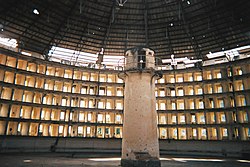In 1895, the first films began to be shown publicly were released and, on the same year, Sigmund Freud and Josef Brueur published their book 'Studies on Hysteria'. Literary and political movements have been the basis of many film analysis theories however the psychoanalytical theory of film only came about as a result of science and medicine being able to understand why people can be refereed to as 'mad'.
At the time, people with hysteria were ridiculed and either locked up, exorcised or burnt. They considered to be liars, deviants and lazy. Many theorists such as Jean-Martin Charcot and Sigmund Freud aimed to change this idea through the use of psychoanalytical theory.
Sigmund Freud's later book, 'The Interpretation of Dreams' (1899) brought on the idea of dreaming being a form of hallucinating wish fulfilment and not just nonsense. Dreams are full of meaning and logic in dreams changes from that of conscious thought hence the need for interpretation. The are significant and relevant because they can reveal symptoms of illness and also be used as a way of driving creativity. As they can identify illness, they can be used as part of a cure.
Bringing the use of Psychoanalyses round to film, we have the theory of the Id, Superego and Ego.
Id - Instinctive impulses such as desire for food, warmth. Fears/Wishes. Non-Moral impulses
Superego - Moral conscience able to impose guilt. Responds to rules and laws
Ego - The conscience. Strives to be moral by acting between Id and Superego.
Link to tvtropes page about applying the Freudian trio to film characters - http://tvtropes.org/pmwiki/pmwiki.php/FreudianTrio/Film
For example the three main protagonists of 'Ghostbusters'
- Peter Venkman: Disinterested, Deadpan Snarker (Id)
- Egon Spengler: Rational, stoic (Superego).
- Ray Stanz: Intellectually driven, though very passionate (Ego).
1919 saw the start of the idea of the 'Uncanny'. The uncanny is the idea that seemingly normal objects are made unfamiliar to us and arouses the idea that the objects are made frightening strange and yet somehow secretly familier.
The ideas are
- Deja-vu (Clash between familiar and unfamiliar) Example: 'Mr. Nobody' (Jaco Van Dormael, 2009)
- The Double (Twins and doppelganger) Example: 'The Matrix Revolutions' (The Wachoski Brothers, 2003)
- The automaton (Unsure if character is real or not) Example: 'The World's End' (Edgar Wright, 2013)
Tuesday, 2 December 2014
Practises in Looking
Identifying the differences between 'Seeing' and 'Looking'
- Seeing is an arbitrary concept that we do on a regular basis without thought
- Looking is a choice we are aware of and involves a sense of purpose.
Philosopher and literary theorist Roland Barthes explained that an image has two levels of meaning. The is the Denotative meaning which is when an image to denote specific truths and indicate an idea of documentary evidence of objective circumstances while the Connotative meaning of an image connotes a more culturally specific meaning.
There are circumstances in which we ourselves are the ones being look at with the most prominent example being the use of CCTV. CCTV plays with power as there is nothing we can do to stay out of their view and we have no say as to whether we wish to be watched by unseen surveyors or not. We are given no input and yet we tend to ignore them as they are background elements. Even we our minds let us forget that we are being watched, we are still being observed which brings about the idea of voyeurism as there are times when we are unaware that we are being watched at all.
Michel Foucault
Another philosopher who declared that modern societies are designed in a way that makes people take part in self-regulating behaviour and are willing to obey laws as well as conform to dominant social values. His idea claims that modern societies do not work through coercion but instead work through cooperation as a society.
Using the idea of being watched, Jeremy Bentham designed a prison dubbed the 'Panopticon' which was designed in a way that the guards can see every prisoner without even moving and prisoners can see each other as the building was designed in a circle with the guard tower in the middle.
This meant that prisoners acted differently then they would when out of sight in other prisons. The tower was designed so that the prisoners couldn't tell if someone was in or not. I bring this up because this displays that people act differently when being observed and even more so when they aren't even sure if someone is even watching at that moment in time, similar to CCTV cameras. A CCTV camera may not even be on but there is no way of telling so we still acknowledge the possibility of being watched.
Subscribe to:
Comments (Atom)
